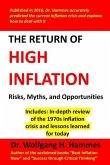- Broschiertes Buch
- Merkliste
- Auf die Merkliste
- Bewerten Bewerten
- Teilen
- Produkt teilen
- Produkterinnerung
- Produkterinnerung
Originally published in 1933, this book presents a study of the relation between the size and efficiency of industries.
Andere Kunden interessierten sich auch für
![Increasing Return Increasing Return]() G. T JonesIncreasing Return34,99 €
G. T JonesIncreasing Return34,99 €![Names of Owners, Area and Valuation of All Properties Held in Fee, Perpetuity, or on Long Leases: Return Names of Owners, Area and Valuation of All Properties Held in Fee, Perpetuity, or on Long Leases: Return]() Names of Owners, Area and Valuation of All Properties Held in Fee, Perpetuity, or on Long Leases: Return22,99 €
Names of Owners, Area and Valuation of All Properties Held in Fee, Perpetuity, or on Long Leases: Return22,99 €![The Return To Protection The Return To Protection]() William SmartThe Return To Protection35,99 €
William SmartThe Return To Protection35,99 €![Increasing Farm Earnings by the Use of Simple Farm Accounts Increasing Farm Earnings by the Use of Simple Farm Accounts]() Increasing Farm Earnings by the Use of Simple Farm Accounts15,99 €
Increasing Farm Earnings by the Use of Simple Farm Accounts15,99 €![Return of Untenanted Lands in Rural Districts, Distinguishing Demesnes on Which There is a Mansion, Showing: Rural District and Electoral Division; To Return of Untenanted Lands in Rural Districts, Distinguishing Demesnes on Which There is a Mansion, Showing: Rural District and Electoral Division; To]() AnonymousReturn of Untenanted Lands in Rural Districts, Distinguishing Demesnes on Which There is a Mansion, Showing: Rural District and Electoral Division; To29,99 €
AnonymousReturn of Untenanted Lands in Rural Districts, Distinguishing Demesnes on Which There is a Mansion, Showing: Rural District and Electoral Division; To29,99 €![Increasing Human Efficiency in Business [microform]; a Contribution to the Psychology of Business Increasing Human Efficiency in Business [microform]; a Contribution to the Psychology of Business]() Walter Dill ScottIncreasing Human Efficiency in Business [microform]; a Contribution to the Psychology of Business21,99 €
Walter Dill ScottIncreasing Human Efficiency in Business [microform]; a Contribution to the Psychology of Business21,99 €![The Return of High Inflation: Risks, Myths, and Opportunities The Return of High Inflation: Risks, Myths, and Opportunities]() Wolfgang H. HammesThe Return of High Inflation: Risks, Myths, and Opportunities28,99 €
Wolfgang H. HammesThe Return of High Inflation: Risks, Myths, and Opportunities28,99 €-
-
-
Originally published in 1933, this book presents a study of the relation between the size and efficiency of industries.
Hinweis: Dieser Artikel kann nur an eine deutsche Lieferadresse ausgeliefert werden.
Hinweis: Dieser Artikel kann nur an eine deutsche Lieferadresse ausgeliefert werden.
Produktdetails
- Produktdetails
- Verlag: Cambridge University Press
- Seitenzahl: 318
- Erscheinungstermin: 30. September 2015
- Englisch
- Abmessung: 216mm x 140mm x 19mm
- Gewicht: 450g
- ISBN-13: 9781316509562
- ISBN-10: 1316509567
- Artikelnr.: 43898306
- Herstellerkennzeichnung
- Books on Demand GmbH
- In de Tarpen 42
- 22848 Norderstedt
- info@bod.de
- 040 53433511
- Verlag: Cambridge University Press
- Seitenzahl: 318
- Erscheinungstermin: 30. September 2015
- Englisch
- Abmessung: 216mm x 140mm x 19mm
- Gewicht: 450g
- ISBN-13: 9781316509562
- ISBN-10: 1316509567
- Artikelnr.: 43898306
- Herstellerkennzeichnung
- Books on Demand GmbH
- In de Tarpen 42
- 22848 Norderstedt
- info@bod.de
- 040 53433511
Preface
Foreword
Part I. Introduction: 1. Definition
2. Method
3. Interpretation
Part II. The London Building Industry, 1845-1913: 1. Introduction
2. Brickwork
3. Carpentry and joinery
4. Masonry
5. Roofing
6. Plumbing
7. Painting
8. Plastering
9. The building industry - costs
10. The building industry - size
11. Provisional conclusions concerning the building industry
Part III. The Lancashire Cotton Industry, 1845-1913: 1. Introduction
2. Index numbers of prices
3. The size of the industry
4. Provisional conclusions
Part IV. The Cleveland Pig Iron Industry, 1883-1925: 1. Introduction
2. Index numbers, etc.
3. The size of the industry, materials used, and size of the firms engaged therein
4. Provisional conclusions
Part V. The Massachusetts Cotton Industry, 1845-1920: 1. Introduction
2. The index numbers of prices and costs
3. The size of the industry and of the firms engaged therein
4. Provisional conclusions
Part VI. The American Pig Iron Industry, 1883-1925: 1. Introduction
2. The index numbers of prices and costs
3. The size of the industry and of the operating units
4. Provisional conclusions
Part VII. Conclusion: 1. Summary of results
2. Historical aspects
3. Elasticities of return
4. Causation
Statistical appendices: Appendix 1. The London building industry, 1845-1913
Appendix 2. The Lancashire cotton industry, 1845-1913
Appendix 3. The Cleveland pig iron industry, 1883-1925
Appendix 4. The Massachusetts cotton industry, 1845-1920
Appendix 5. The American pig iron industry, 1883-1925
Index.
Foreword
Part I. Introduction: 1. Definition
2. Method
3. Interpretation
Part II. The London Building Industry, 1845-1913: 1. Introduction
2. Brickwork
3. Carpentry and joinery
4. Masonry
5. Roofing
6. Plumbing
7. Painting
8. Plastering
9. The building industry - costs
10. The building industry - size
11. Provisional conclusions concerning the building industry
Part III. The Lancashire Cotton Industry, 1845-1913: 1. Introduction
2. Index numbers of prices
3. The size of the industry
4. Provisional conclusions
Part IV. The Cleveland Pig Iron Industry, 1883-1925: 1. Introduction
2. Index numbers, etc.
3. The size of the industry, materials used, and size of the firms engaged therein
4. Provisional conclusions
Part V. The Massachusetts Cotton Industry, 1845-1920: 1. Introduction
2. The index numbers of prices and costs
3. The size of the industry and of the firms engaged therein
4. Provisional conclusions
Part VI. The American Pig Iron Industry, 1883-1925: 1. Introduction
2. The index numbers of prices and costs
3. The size of the industry and of the operating units
4. Provisional conclusions
Part VII. Conclusion: 1. Summary of results
2. Historical aspects
3. Elasticities of return
4. Causation
Statistical appendices: Appendix 1. The London building industry, 1845-1913
Appendix 2. The Lancashire cotton industry, 1845-1913
Appendix 3. The Cleveland pig iron industry, 1883-1925
Appendix 4. The Massachusetts cotton industry, 1845-1920
Appendix 5. The American pig iron industry, 1883-1925
Index.
Preface
Foreword
Part I. Introduction: 1. Definition
2. Method
3. Interpretation
Part II. The London Building Industry, 1845-1913: 1. Introduction
2. Brickwork
3. Carpentry and joinery
4. Masonry
5. Roofing
6. Plumbing
7. Painting
8. Plastering
9. The building industry - costs
10. The building industry - size
11. Provisional conclusions concerning the building industry
Part III. The Lancashire Cotton Industry, 1845-1913: 1. Introduction
2. Index numbers of prices
3. The size of the industry
4. Provisional conclusions
Part IV. The Cleveland Pig Iron Industry, 1883-1925: 1. Introduction
2. Index numbers, etc.
3. The size of the industry, materials used, and size of the firms engaged therein
4. Provisional conclusions
Part V. The Massachusetts Cotton Industry, 1845-1920: 1. Introduction
2. The index numbers of prices and costs
3. The size of the industry and of the firms engaged therein
4. Provisional conclusions
Part VI. The American Pig Iron Industry, 1883-1925: 1. Introduction
2. The index numbers of prices and costs
3. The size of the industry and of the operating units
4. Provisional conclusions
Part VII. Conclusion: 1. Summary of results
2. Historical aspects
3. Elasticities of return
4. Causation
Statistical appendices: Appendix 1. The London building industry, 1845-1913
Appendix 2. The Lancashire cotton industry, 1845-1913
Appendix 3. The Cleveland pig iron industry, 1883-1925
Appendix 4. The Massachusetts cotton industry, 1845-1920
Appendix 5. The American pig iron industry, 1883-1925
Index.
Foreword
Part I. Introduction: 1. Definition
2. Method
3. Interpretation
Part II. The London Building Industry, 1845-1913: 1. Introduction
2. Brickwork
3. Carpentry and joinery
4. Masonry
5. Roofing
6. Plumbing
7. Painting
8. Plastering
9. The building industry - costs
10. The building industry - size
11. Provisional conclusions concerning the building industry
Part III. The Lancashire Cotton Industry, 1845-1913: 1. Introduction
2. Index numbers of prices
3. The size of the industry
4. Provisional conclusions
Part IV. The Cleveland Pig Iron Industry, 1883-1925: 1. Introduction
2. Index numbers, etc.
3. The size of the industry, materials used, and size of the firms engaged therein
4. Provisional conclusions
Part V. The Massachusetts Cotton Industry, 1845-1920: 1. Introduction
2. The index numbers of prices and costs
3. The size of the industry and of the firms engaged therein
4. Provisional conclusions
Part VI. The American Pig Iron Industry, 1883-1925: 1. Introduction
2. The index numbers of prices and costs
3. The size of the industry and of the operating units
4. Provisional conclusions
Part VII. Conclusion: 1. Summary of results
2. Historical aspects
3. Elasticities of return
4. Causation
Statistical appendices: Appendix 1. The London building industry, 1845-1913
Appendix 2. The Lancashire cotton industry, 1845-1913
Appendix 3. The Cleveland pig iron industry, 1883-1925
Appendix 4. The Massachusetts cotton industry, 1845-1920
Appendix 5. The American pig iron industry, 1883-1925
Index.

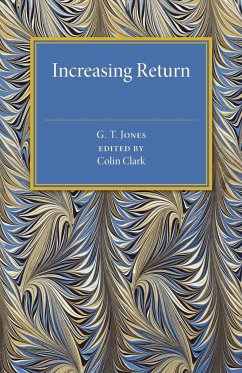

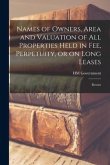
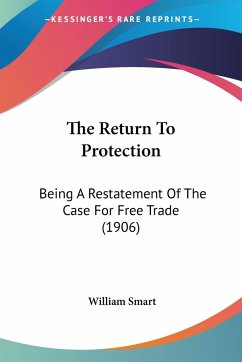
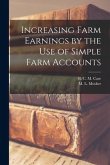

![Increasing Human Efficiency in Business [microform]; a Contribution to the Psychology of Business Increasing Human Efficiency in Business [microform]; a Contribution to the Psychology of Business](https://bilder.buecher.de/produkte/65/65529/65529760m.jpg)
